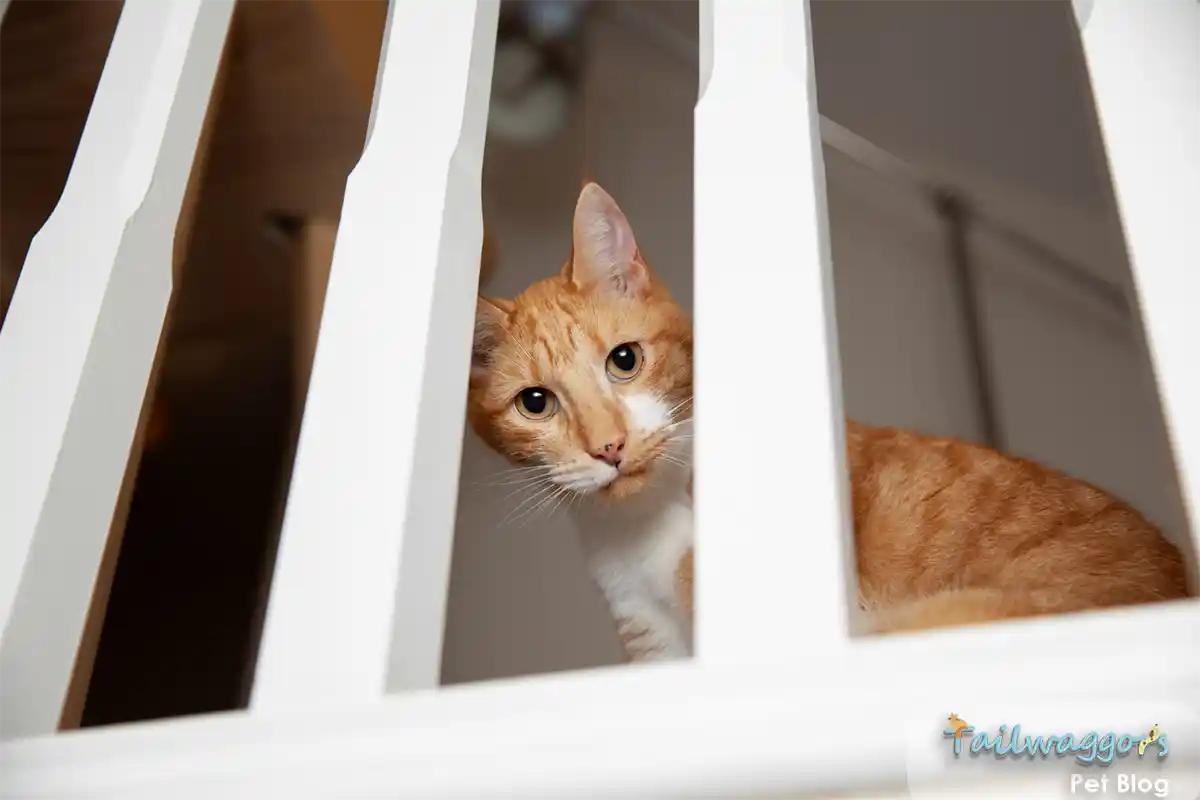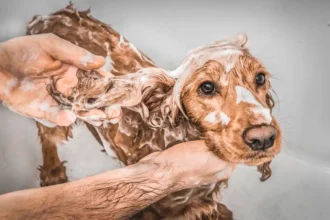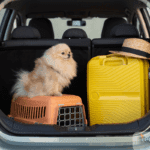The ASPCA Animal Poison Control Center reports that many emergency veterinary visits involve preventable household hazards. As pet owners, we can take proactive steps to protect our feline friends from common dangers in our homes. Creating a safe haven for your curious cat doesn’t mean sacrificing your home’s style – it’s about smart, research-backed solutions that work for every room.
Whether you’re welcoming a new kitten or upgrading your current cat’s environment, this comprehensive guide combines veterinary expertise with practical, affordable solutions to protect both your beloved pet and your living space. Let’s explore how to create the perfect pet-friendly home that keeps your feline family member safe and your style intact.
Understanding Cat Safety: Expert Guidelines
Why Cat-Proofing Matters
Household accidents are a significant concern for pet owners, with many emergencies stemming from hazards that are entirely preventable. Beyond statistics, understanding your cat’s natural behaviors is crucial for effective prevention.
- • Preventable accidents: Many can be avoided with proper cat-proofing
- • High-risk age group: 6 months to 2 years
- • Most dangerous rooms: Kitchen, Bathroom
- • Top hazards: Cords, Toxins, Windows
- • Most common incidents: Falls and toxic exposure are frequent dangers
- Millions of cats suffer household accidents each year making safety precautions essential. (ASPCA, 2024)
- Cats are driven to explore, scratch, and climb by natural instincts
- Basic safety principles can prevent most common accidents and injuries
Our feline friends are natural-born explorers, driven by deep-rooted instincts to climb the highest bookshelf, scratch that tempting couch corner, or investigate the smallest nook. It’s not mischief – it’s simply who they are. The good news? By implementing basic safety measures throughout your home, you can protect your curious companion while honoring these natural behaviors. Think of cat-proofing as creating a playground that’s both safe and enriching, where your cat can follow their instincts without risking injury. It’s about peace of mind for you and protection for them.
Before diving into specific cat-proofing solutions, a thorough room-by-room safety audit is essential for identifying potential hazards. Picture yourself as a cat detective, creating a detailed checklist that covers everything from hidden access points to dangling cords.
1. Initial Assessment
Before purchasing any products, complete this room-by-room safety audit:
- □ Identify access points to restricted areas
- □ List exposed electrical cords
- □ Locate and document toxic plants and substances
- □ Note potential climbing and falling hazards (>5 feet height risk)
- □ Check window and door security (screen strength)
- □ Check furniture stability (tip-over risk)
Start by walking through your home, marking common danger zones like exposed electrical wiring, toxic houseplants, and unstable furniture that could tip over. Pay special attention to windows and doors – those tempting escape routes that curious cats love to investigate.
Locate toxic substances View complete toxic plants guide →
This systematic assessment not only helps prioritize your cat-proofing efforts but ensures no potential hazard goes unnoticed. Remember, what might seem harmless to us could be an irresistible (and dangerous) playground for your feline friend.
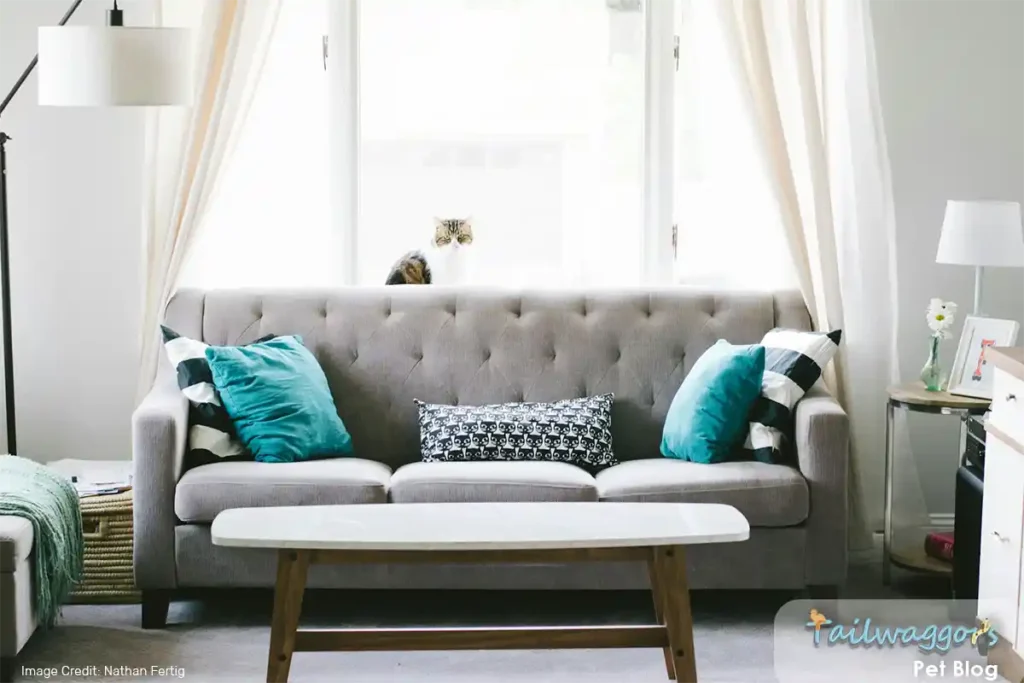
Room-by-Room Safety Assessment
- • Step 1: Identifying hazard zones
- • Step 2: Prioritize areas where your cat spends the most time
- • Step 3: Use our safety checklist to evaluate each room systematically
“Conduct a room-by-room assessment from your cat’s perspective. Get down to their eye level to spot potential dangers you might otherwise miss.”
“Start your safety assessment in high-traffic areas where your cat spends the most time.”
– Dr. Esther Knoetze, BVSc
Room-by-Room Cat-Proofing Guide
- 1 Cabinet & drawer locks
- 2 Appliance safety covers
- 3 Secure trash containers
- 4 Non-toxic cleaning storage
- 5 Anti-slip mats
- 1 Window protection
- 2 Cord management
- 3 Furniture anchoring
- 4 Blind cord security
- 5 Entertainment system protection
- 1 Cabinet & medicine locks
- 2 Toilet lid locks
- 3 Secure shower curtains
- 4 Non-slip surfaces
- 5 Small item storage
- 1 Window screens
- 2 Balcony protection
- 3 Safe plant zones
- 4 Pool/pond protection
- 5 Secure fencing
- 1 Appliance door safety
- 2 Chemical storage
- 3 Dryer vent protection
- 4 Hidden spaces blocking
- 1 Tool storage
- 2 Chemical safety
- 3 Vehicle fluid protection
- 4 Entry/exit security
- 1 Cable management
- 2 Small supply storage
- 3 Equipment protection
- 4 Paper/stationary organization
Now that we understand the importance of cat-proofing, let’s break it down room by room. We’ve created these handy cards to help you tackle each space in your home systematically. Think of it as a treasure map for creating safe zones – each room has its own unique challenges and solutions. From kitchen cabinets to office cables, we’ll help you spot and secure potential hazards your curious cat might find interesting.
Ready to explore your home from a cat’s perspective?
Kitchen Hazards: High Priority
The kitchen poses significant risks for cats due to toxic foods and hazardous appliances. While exact statistics are unavailable, veterinary experts emphasize the importance of securing this high-risk area.
- Toxic Foods: Many common foods, including onions, garlic, grapes, and chocolate, are toxic to cats.
- Appliances: Stoves and refrigerators can cause burns or pinching injuries.
- Storage Solutions: Properly securing cabinets and drawers can keep curious cats safe.
Critical Areas to Secure:
- Toxic food storage (keep 48″ minimum height).
- Cleaning supplies (sealed, locked cabinets).
- Small items (e.g., rubber bands, twist ties).
- Hot surfaces (install stove guards).
Cabinet & Storage Solutions
 Safety 1st Adhesive Magnetic Lock System, 8 Locks And 2 Keys. Rating 4.6/5
Safety 1st Adhesive Magnetic Lock System, 8 Locks And 2 Keys. Rating 4.6/5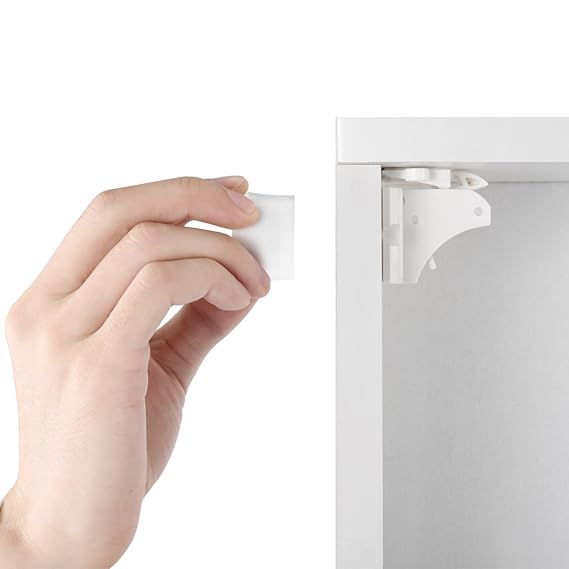 Vmaisi Adhesive Magnetic Cabinet Locks (12 Locks and 2 Keys) Rating 4.5/5
Vmaisi Adhesive Magnetic Cabinet Locks (12 Locks and 2 Keys) Rating 4.5/5Disclosure: This website contains affiliate links. As an Amazon Associate, we earn from qualifying purchases at no additional cost to you. We only recommend products and services we trust and believe will be valuable to our readers. Thank you for supporting this website!
Living Areas: Creating Safe Spaces
The living room can be risky for cats due to windows, cords, and furniture. Focus on the following measures:
Priority Safety Steps:
- Secure unstable furniture with brackets rated for 75+ lbs
- Cover electrical cords with certified cord covers
- Remove toxic plants, read our toxic plant article for more info →
- Install window guards that can withstand an 8+ lb force.
Expert Tip: “Window screens should be checked weekly for integrity – cats can dislodge poorly secured screens.”
Bathroom & Laundry Safety: Hidden Dangers
Bathrooms and laundry areas can expose cats to toxic substances. Veterinary professionals stress that proper storage and precautions can significantly reduce risks.
Immediate Action Items:
- Store medications in cabinets at least 60″ above the floor, and keep them locked.
- Lock away cleaning products (prefer phenol-free options).
- Secure small items (e.g., hair ties, cotton swabs).
- Keep toilet lids closed to prevent access to harmful bacteria.
Expert Tip: “While childproofing devices can be costly, it’s crucial to avoid using elastic bands to secure cabinet knobs, as they can be hazardous if your cat ingests them. Instead, opt for pet-safe childproofing solutions, such as magnetic cabinet locks, to ensure your cat’s safety.”
Outdoor Spaces: Secure Freedom
Veterinary experts recommend outdoor safety measures to reduce fall-related injuries and exposure to toxins.
Balcony Safety
- Install tightly woven, lockable screens.
- USe only non-toxic outdoor plants.
- Consider adding a catio or enclosed play space for more security.
Garden Considerations
- Remove hazardous plants and chemicals.
- Create a fenced “cat yard” with approved plants.
- Ensure your cat wears a collar with an ID tag.
Critical Safety Parameters:
- Screen strength: Minimum 8 lb pressure resistance.
- Height barriers: At least 6 feet.
- Gap tolerance: Maximum 0.5 inches
- Temperature monitoring: Provide shade when temperatures exceed 85°F.
Get our cat emergency planning guide here.
Expert Tip: “The ASPCA Animal Poison Control Center (APCC) assisted over 400,000 cases in 2023. To safeguard your cat, it’s essential to familiarize yourself with their comprehensive lists of toxic plants, foods, and household chemicals.”
Living Areas & Bedrooms
Furniture Protection:
- Replace toxic plants with safe alternatives like spider plants or cat grass.
- Install sturdy window screens with a tight weave and locking mechanisms.
- Use cord concealers or tape cords securely out of reach. For persistent chewers, apply pet-safe deterrent sprays.
Success Story: When Jessica adopted her playful tabby, Max, she knew she needed to rethink her houseplant collection. By replacing toxic varieties with safe alternatives, like spider plants and parlor palms, she created a lush living room that’s as secure as it stylish. Max loves napping under the foliage!
Entertainment Areas
- Use durable cord covers like PetCords Protectors (flexible steel core).
- Secure TVs and heavy furniture with wall anchors.
- Provide cat trees or shelves to redirect climbing behavior.
We recommend PetCords Protectors. Unlike flimsy plastic tubes, these durable cord covers have a flexible steel core that can’t be chewed through. The sleek design blends in behind furniture, keeping your cat safe and your home clutter-free.

PetCords Dog and Cat Cord Pet Protector
to keep your pet safe from electrical cables
Secure TVs and top-heavy furniture to the wall with safety straps or anchors. This prevents tipping accidents if your cat decides to climb.

TV Safety Straps Furniture and TV Wall Anchors and Punch-Free Clamp Straps for Baby Proofing, VESA Mounting, Metal Connectors, Black
Heavy-duty anti-tip belt prevents TV and furniture from tipping over. Protects children in case of emergency
Provide plenty of approved climbing spaces, like cat trees and shelves, to redirect their natural behavior.
Creating safe spaces
 GoTags Reflective Breakaway Collar with ID tag and bell
GoTags Reflective Breakaway Collar with ID tag and bell Yaheetech 54in Cat Tree Tower Condo
Yaheetech 54in Cat Tree Tower Condo FourFurPets 72.4″ Cat Tree, Modern Cat Tower for Indoor Cats, Multi-Level Cat Condo
FourFurPets 72.4″ Cat Tree, Modern Cat Tower for Indoor Cats, Multi-Level Cat Condo K&H Pet Products EZ Mount Window Perch
K&H Pet Products EZ Mount Window Perch PetFusion Ultimate Cat Scratcher Lounge, Reversible Infinity Style in Multiple Colors. Made from Recycled Corrugated Cardboard, Durable & Long Lasting
PetFusion Ultimate Cat Scratcher Lounge, Reversible Infinity Style in Multiple Colors. Made from Recycled Corrugated Cardboard, Durable & Long Lasting
Essential Cat-Proofing Checklist
Review this checklist monthly and after any home changes or renovations. Prevention is always better than emergency treatment.
– Dr. Esther Knoetze (BSc)(BVSc)
By working through this checklist systematically, you can create a home that’s as safe as it is inviting for your feline friend. Remember, even the most curious cats can thrive in a properly secured space.
Expert Tip: “Taking the time to thoroughly cat-proof your home is an investment in your pet’s lifelong health and happiness. Plus, it provides invaluable peace of mind for you!”
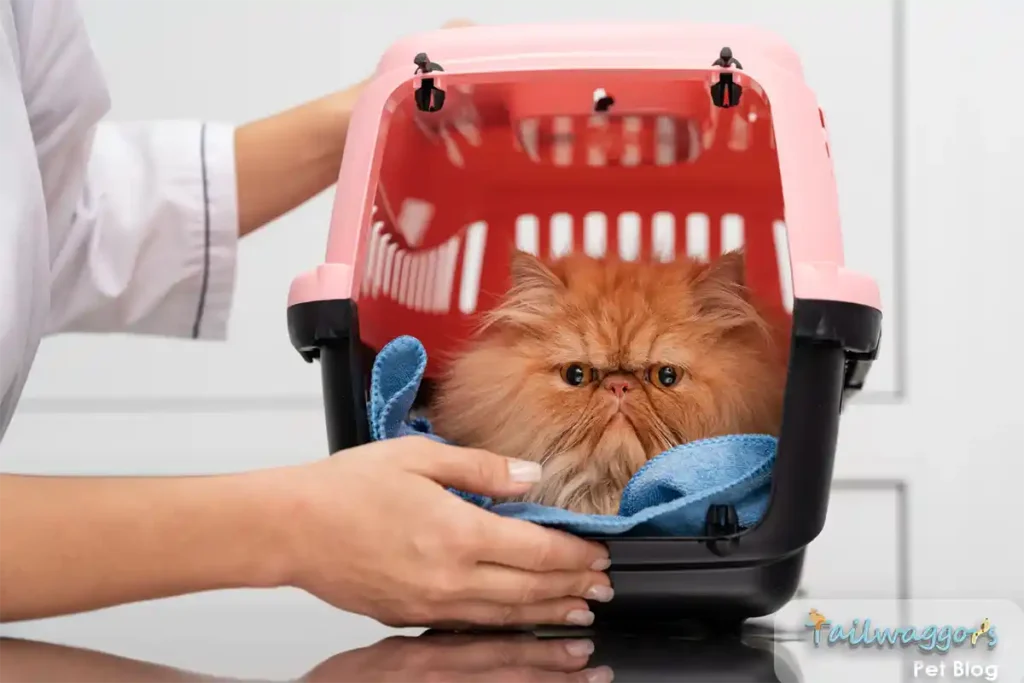
Emergency Preparation & Response
❗ Recognizing early signs of distress in your cat is vital for prompt treatment and can significantly improve outcomes.
1. Respiratory Distress
- • Breathing rate >40/minute
- • Open-mouth breathing
- • Blue-tinged gums
2. Toxic Exposure Signs
- • Sudden drooling
- • Vomiting/diarrhea
- • Lethargy/weakness
3. Trauma Indicators
- • Limping/inability to move
- • Visible wounds
- • Behavioral changes
Emergency Contact Protocol
Keep These Numbers Accessible:
- ASPCA Poison Control Center: (888) 426-4435
- Pet Poison Helpline: (855) 764-7661
- Local Emergency Vet: [Find nearest location]
Expert Tip: “Create an emergency kit and store it where all family members can access it quickly.” – Dr. Esther Knoetze, BVSc
Emergency Kit Essentials
Veterinary-Recommended Supplies:
| Item | Purpose | Replace Every |
|---|---|---|
| Gauze rolls | Wound care | 6 months |
| Saline solution | Eye/wound cleaning | 1 year |
| Digital thermometer | Temperature monitoring | 2 years |
| Styptic powder | Minor bleeding | 1 year |
For assistance in creating a comprehensive emergency plan, refer to our detailed guide on emergency preparedness for pets.
By staying vigilant and prepared, you can ensure the safety and well-being of your feline companion during emergencies.

Creating Your Cat Safety Action Plan
Following a structured action plan makes cat-proofing both manageable and effective.
Safety Monitoring System
Monthly Check Schedule:
| Area | Check Points | Frequency |
|---|---|---|
| Windows | Screen integrity | Weekly |
| Cabinets | Lock function | Bi-weekly |
| Furniture | Anchor stability | Monthly |
| Emergency Kit | Supply check | Monthly |
Expert Tip: “Regular safety checks prevent 70% of common household accidents.” – Dr. Esther Knoetze, BVSc
Success Indicators
Ongoing Maintenance
Quarterly Safety Updates:
- Product inspection
- New hazard assessment
- Emergency plan review
- Supply replenishment
Final Thoughts: Creating Your Safe Cat Haven
Establishing a cat-safe home not only prevents accidents but also allows your feline friend to explore and thrive, providing you with peace of mind. By adhering to this guide and remaining vigilant, you create an environment where your cat can safely express natural behaviors.
Remember, cat-proofing is an ongoing commitment that evolves with your pet’s adventures and changes in your home. Stay alert to potential hazards and regularly review your safety measures. Your dedication today lays the foundation for countless happy moments with your furry family member tomorrow.
Implementation Success
- Follow This Path:
- Complete a comprehensive safety assessment.
- Install priority safety protections.
- Develop detailed emergency plans.
- Maintain regular safety checks.
Expert Tip: “Cat-proofing isn’t a one-time task—it’s an ongoing commitment to your pet’s safety.” – Dr. Esther Knoetze, BVSc
By following this action plan and maintaining regular safety practices, you ensure a secure and enriching environment for your cat.
🐾 Love cats as much as we do? 🐶
Share this guide with your fellow cat lovers and let them discover everything they need to know about keeping their cat happy and healthy. Forward it now! 💌
Need More Help?
- Toxic Plants for Cats: A Comprehensive Reference Guide
- New Cat Supply Shopping List: Essential Items for Your Feline Friend
- Protect your cat: 5 Critical components of an Emergency plan
Expert Q&A: Complete Cat Safety Guide
Dr. Esther answers your most-asked questions about cat-proofing and safety.
Essential Safety
According to AVMA safety guidelines, follow these proven steps:
- Install childproof locks on all cabinets
- Use motion-activated deterrents
- Create designated play zones
- Implement vertical space management
WCMA certified safety requirements:
- Install cordless blinds only
- Use cord cleats at 6ft minimum height
- Choose breakaway systems
- Consider motorized options
Emergency Care
Follow this ASPCA emergency protocol:
- Identify the plant if possible (take photos)
- Call ASPCA Poison Control: (888) 426-4435
- Monitor breathing rate and gum color
- Document all symptoms for vet
Prevention & Protection
Veterinarian-recommended solutions:
- Install door lever locks (child-proof rated)
- Use door knob covers with 5lb+ resistance
- Add high-mount deadbolts for exterior doors
- Consider automatic door closers
AVMA-tested trash security measures:
- Use dual-lock mechanisms
- Choose heavy-base models (15lb+ weight)
- Install under-sink mounting
- Consider motion-sensor lids
Room-by-Room Safety Guide
Essential bedroom safety checklist from AVMA:
- Secure all window screens (8lb+ pressure rating)
- Cover electrical cords with protective tubing
- Anchor furniture to walls (75lb rating minimum)
- Remove toxic plants like lilies completely
ASPCA kitchen safety protocol:
- Install child-locks on all lower cabinets
- Secure trash bins with 15lb+ rated lids
- Cover stove knobs (prevent accidental gas)
- Keep counters clear of toxic foods
Veterinary-approved bathroom safety measures:
- Store medications at 60″ minimum height
- Install toilet lid locks (prevent drowning)
- Secure cleaning supplies in latched cabinets
- Keep small items (hair ties, cotton swabs) contained
Critical laundry room safety requirements:
- Keep detergents in locked cabinets
- Check washer/dryer before each use
- Secure loose wires and hoses
- Install motion sensors for lighting
Living room safety protocol:
- Secure all entertainment system cords
- Anchor tall furniture (bookshelves, TV stands)
- Remove or secure blinds cords
- Create safe climbing alternatives
Seasonal Safety & Holiday Protection
AVMA holiday safety guidelines:
- Secure tree with heavy base (25lb+ weight)
- Avoid tinsel completely (surgical emergency)
- Use pet-safe ornaments above 3 feet
- Cover water stand (tree preservatives are toxic)
Critical summer safety measures:
- Maintain indoor temperature 70-78°F
- Secure window screens (prevent falls)
- Provide multiple water stations
- Create cool rest zones
Halloween safety protocol:
- Secure candy and chocolate (especially sugar-free)
- Keep cats away from door traffic
- Remove fake cobwebs (entanglement risk)
- Use LED candles only
ASPCA-approved cleaning guidelines:
- Use pet-safe cleaning products only
- Ventilate areas for 2 hours minimum
- Keep cats separated during cleaning
- Store supplies immediately after use
Winter safety requirements:
- Keep cats away from heat sources
- Check for drafts near resting spots
- Protect from antifreeze exposure
- Maintain humidity 40-60%
Emergency Response & Critical Care
ASPCA Poison Control critical warning signs:
- Sudden drooling or foaming
- Vomiting or retching
- Difficulty breathing (>40 breaths/minute)
- Lethargy or collapse
AVMA emergency indicators requiring immediate care:
- Breathing changes (panting, rapid breathing)
- Pale or blue gums (normal is pink)
- Trauma from falls or impacts
- Known toxin exposure
Veterinary-recommended emergency kit contents:
- Digital thermometer (normal: 100.4-102.5°F)
- Sterile saline solution (wound cleaning)
- Gauze and self-adhering bandages
- Pet carrier ready for transport
ASPCA plant toxicity symptoms:
- Lilies: Vomiting, lethargy within 6 hours
- Philodendron: Mouth burning, drooling
- Sago Palm: Severe vomiting, seizures
- Tulips: GI upset, depression
Emergency protocol for falls:
- Don’t move if seriously injured
- Check breathing and consciousness
- Call emergency vet immediately
- Transport carefully in sturdy carrier
Average emergency costs (2024):
- Emergency exam: $100-150
- Toxin treatment: $300-1,200
- Trauma care: $800-2,500
- Overnight monitoring: $200-500
Recommended Safety Products & Solutions
Veterinarian-tested furniture protection:
- Microfiber covers (9.8/10 protection rating)
- Clear vinyl guards (9.5/10 for corners)
- Double-sided tape barriers (8.9/10 effectiveness)
- Protective sprays (8.5/10 deterrent rating)
Safety-rated window protection:
- Metal mesh (Grade 316, 8lb+ pressure rated)
- Reinforced pet screens (powder-coated)
- Security frames (aluminum, double-locked)
- Professional installation recommended
ASPCA-tested cabinet security:
- Magnetic locks (5lb+ force resistance)
- Child-proof latches (spring-loaded)
- U-shaped locks (for knob handles)
- Sliding locks (for adjacent doors)
Veterinary-approved cord management:
- Split tubing (flame-retardant rated)
- Cord concealment tracks (wall-mounted)
- Braided sleeves (multi-cord protection)
- Cord clips (keep wires flat)
Safe deterrent options tested by AVMA:
- Motion-activated air sprays (harmless)
- Ultrasonic devices (adjustable range)
- Pressure-sensitive mats (for furniture)
- LED motion sensors (night deterrent)
Safety monitoring features to look for:
- 1080p resolution minimum
- Night vision capability
- Two-way audio communication
- Motion alerts to phone
Special Situations & Multiple Cat Households
AVMA multi-cat safety guidelines:
- One litter box per cat plus one extra
- Multiple elevated resting spots (2 per cat)
- Separate feeding stations (3 feet apart)
- Multiple scratch posts in each room
Essential first-time owner safety steps:
- Complete room-by-room safety audit
- Install basic safety equipment
- Set up safe spaces and hiding spots
- Prepare emergency contact list
Special needs accommodation requirements:
- Non-slip flooring throughout
- Ramps for favorite spots (20° max incline)
- Easy-access litter boxes (low sides)
- Extra padding around resting areas
AAFP-approved introduction protocol:
- Separate safe room for new cat (7-14 days)
- Multiple escape routes in all rooms
- Separate resources for each cat
- Supervised interaction periods
Space-efficient safety solutions:
- Vertical space utilization (wall shelves)
- Multi-function cat furniture
- Hidden litter box solutions
- Compact emergency kit storage
Medical accommodation requirements:
- Secure medication storage system
- Easy access to essential resources
- Temperature-controlled rest areas
- Emergency protocol posted visibly


